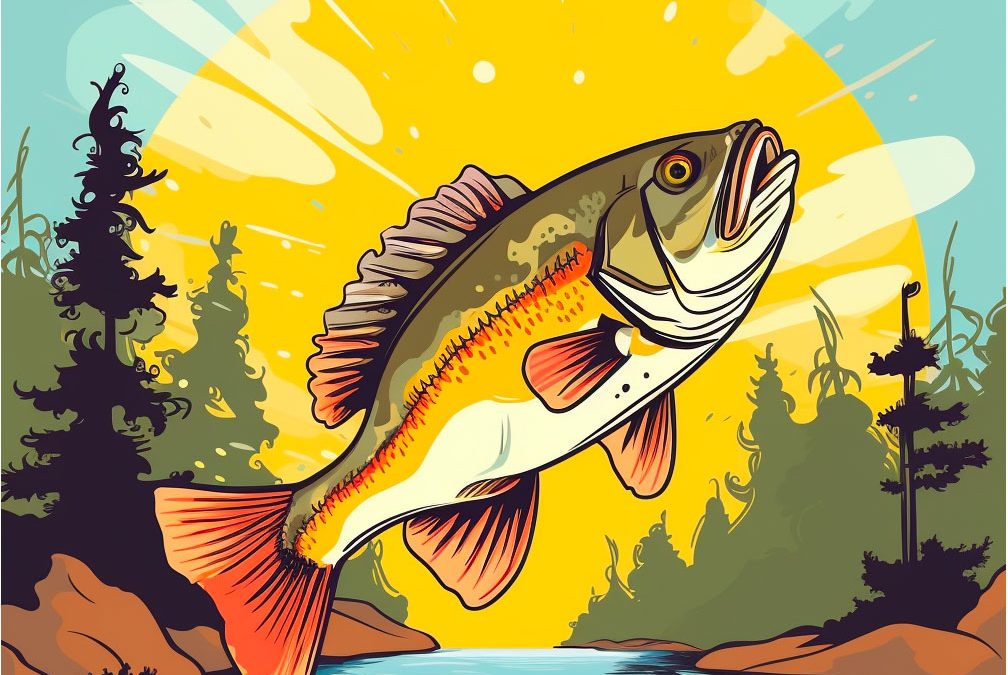Introduction:
Summer is a great time to hit the water for some bass fishing. As the water temperatures rise, the bass become more active and their feeding patterns change. However as you enter the dog days of summer the fish can all but seem to disappear at certain times. We’re going to show you how you can keep catching them in the heat this summer!
To be successful in summer bass fishing, it’s important to understand the behavior of the fish, use the right lures and techniques, and choose the right fishing spots. In this article, we’ll take a closer look at all of these aspects of summer bass fishing so you can catch more fish and have a better overall experience.
Catching Bass After The Spawn/Post Spawn During The Early Summer “Feedup”
As spring transitions into summer, bass fishing becomes a little easier. After completing the spawn, bass feed aggressively to recover lost energy and prepare for the warmer months ahead. Here are some tips on how to catch bass in the early summer when they are easier to catch and actively feeding.
Fish in the Early Morning or Late Evening
In the early summer months, water temperatures start to rise, and as a result, bass tend to become less active and retreat to cooler, deeper waters during the day. In this case, early mornings or late evenings are the best times to fish for bass as the water is cooler, and they become more active. During this time, look for areas where the water is shallow and has plenty of cover and structure, such as logs, rocks, or weeds. Bass will often be lurking in these locations while they feed, waiting to ambush their prey.
Work the Topwater
One of the most exciting techniques to catch bass in the early summer is by using topwater lures. Topwater lures include a variety of floating baits such as poppers, frogs, and buzzbaits. These types of lures create irresistible action that draws bass to the surface, making this an excellent opportunity to catch them. Cast your topwater lure into areas where bass are most likely to be found. Slowly retrieve the bait, creating a commotion in the water to mimic a baitfish. Pay attention and don’t set the hook too quickly, as bass may play with the bait before finally taking it.
Use Spinnerbaits
Spinnerbaits are a versatile bait that is effective in varying water conditions and depths, making them perfect for fishing early in the summer. The key to using spinnerbaits is to keep the lure moving in the water. As you retrieve the bait, it should create a vibration and flash that attracts bass. Typically cast to shallow waters or underneath cover and structure where bass could be hiding and waiting for their prey.
Try Carolina Rigging
Carolina rigging is a technique that allows you to fish baits slowly and passively, creating a more natural presentation to attract bass. A Carolina rig consists of a weight, swivel, and a leader line attached to your bait. Typically, a soft plastic bait is used as the lure, such as crawfish, worms, or lizards. Focus on areas with cover, structure, or ledges where bass could be hiding, and then cast your Carolina Rig near or over the structure, then wait for the weight to hit the bottom. Once the bait has settled onto the bottom, slowly drag it back to the boat. Pay attention to the line for any tension or movement, as this may indicate a bite.
Use Crankbaits
Another useful lure for fishing in early summer is a crankbait. These lures are effective for catching bass in colder water temperatures, as well as warmer water. They come in various sizes, colors, and diving depths which can match the type of water you are fishing in. For early summer, you may want to choose a crankbait that dives close to the mid-range of the water. By using a crankbait, you can cover a lot of water quickly and locate active fish. Once you’ve found the bass, retrieve the bait quickly, making sure the hooks don’t get hung up on any structure or weeds.
Final Early Summer Thoughts
Early summer provides a great opportunity to catch bass as they become more active and hungry after the spawn. These tips can help improve your chances of catching bass during this time and enhance your overall fishing experience. Remember to choose the right bait, focus on cover and structure, and stay aware of the fish’s behaviors and reactions to the bait. With patience, persistence, and a little bit of luck, you will be catching bass left and right this summer. Good luck and tight lines!
“Come With Us As We Catch Bass Offshore During the Early Summer”
Understanding Summer Bass Behavior:
Water Temperature and its Effect on Bass
Summer bass fishing is all about water temperature. As the water temperatures rise, the bass become more active and move into shallower water.
As the springtime rolls around, bass begin to migrate towards their spawning grounds in order to lay their eggs. As the water temperature reaches the mid-60s to low-70s, the spawning process begins. During this time, male bass will prepare beds for the females to lay their eggs in. Once the eggs are laid, the males will guard the eggs until they hatch, which typically takes about 4-7 days.
After the spawn, bass will be in a recovery phase where they may not be as active as they were before or during the spawn. This is when bass will start to transition towards deeper water in search of cooler temperatures and prey. This period of transition can last a week or two.
As summer approaches, the water temperature will continue to rise, leading to an increase in bass activity. The fish will become more aggressive and begin feeding more consistently. During this time of year, bass tend to hang out around structure such as weed beds, rocks, and drop-offs.
A few factors can influence the transition from spawning to summer behavior. One of the most significant factors is the weather. If the springtime is particularly warm and dry, bass may complete the spawning process earlier than normal and begin transitioning to their summer habits sooner. Conversely, if the spring is colder or wetter than normal, the spawn may be delayed, which would also affect the timing of the transition.
Understanding how bass migrate and which structures they prefer can help anglers have more success during this time. By keeping an eye on the water temperature and weather conditions, anglers can adjust their tactics accordingly and increase their chances of a successful day on the water.
Types of Structure and Cover Bass Prefer during the Summer
Bass will typically relate to structure and cover year-round, but during the summer they may be found in deeper water near structure or cover. Examples of structure and cover could be rocky areas, ledges, weed beds, or manmade structure like docks or bridges. It’s important to locate these areas and understand which ones the bass prefer during the summer. Shallow weed beds are often excellent spots to target during the summer, as bass will often use them for cover or ambush points when attacking prey.
Deep Water Structures
Bass tend to stay in deeper waters during the summer months, so fishing deep water structures such as drop-offs, ledges, and humps can be effective. Use a Carolina rig or drop-shot rig with a plastic worm or craw to target these areas.
Weed Beds and Vegetation
Bass also love to hang out in weed beds and other types of vegetation during the summer. Flipping and pitching jigs or Texas-rigged creature baits into these areas can be very productive. Try experimenting with different colors and weights until you find what works.
Shallow Docks and Piers
If you’re fishing in a lake or reservoir that has shallow docks or piers, target these areas with a topwater bait such as a frog or popper. Bass love to hang out under these structures to stay cool and ambush prey.
Currents and Rapids
If you’re fishing in a river or stream during the summer, look for areas with currents or rapids. Bass like to hang out in these areas because the moving water provides oxygen and cooler temperatures. Use a crankbait or spinnerbait to target these areas.
Night Fishing
During the summer, night fishing can be very effective for catching bass. As the sun sets, bass will often move into shallower water to feed. Use a surface bait such as a buzzbait or frog to target these areas.
Points
A point is a piece of land that extends into the water from the shoreline. Points are often good places to fish for bass, especially where they drop off into deeper water. Use a deep-diving crankbait or a jig and pig to target these areas.
Rocky Banks
Bass love to hang out around rocks, especially in areas where there’s a lot of current. Look for areas where rocks are exposed along the shoreline or in shallow water. Try using a crankbait or spinnerbait to entice a strike.
Underwater Structures
Things like sunken trees, brush piles, and old stumps can all be great places to find bass during the summer months. Use a Texas-rigged worm or a jig to target these areas.
Channels
Fish for bass in deeper channels or trenches that run through shallow flats. Bass will often use these as highways to move between deeper and shallower water. Use a Carolina rig or a drop shot rig with a soft plastic worm to target these areas.
Baitfish Schools
If you see schools of baitfish swimming near the surface, there are likely bass nearby. Use a topwater bait such as a popper or a walking bait to catch bass that are feeding on the schools.
Remember, when fishing for bass in the summer you’ll want to target deeper waters with cooler temperatures. Look for areas with cover and structure that can provide ambush points for bass. Don’t be afraid to experiment with different baits and techniques until you find what works best in each location.
Structure/Cover Conclusion
Remember to always pay attention to the time of day and weather conditions when fishing for bass. Early morning and late afternoon tend to be the best times to fish, and overcast days can provide good fishing as well. By using these strategies and experimenting with different baits and techniques, you can increase your chances of catching bass during the summer months.
Preferred Depth of Bass during the Summer
When the water temperature is at its peak during the summer, bass will typically be found in the deeper water near structure or cover. This is because the deeper water stays cooler and allows the bass to move into that deeper part of the water column without overheating. As the water cools down in the evenings or after a rain shower, the bass may move up into shallower water to feed. To have the most success, you’ll need to know what depth the bass are using and adjust your fishing techniques accordingly.
Where Do Bass Go In Summer?? (And Tricks To Catch Them)
Fishing for Different Types of Bass During Summer
As the summer heat starts to ramp up, avid anglers often start thinking about how they can make the most of the season, and one of the most popular ways to do that is by going bass fishing. Bass come in a variety of types, with the most common being largemouth, smallmouth, and spotted bass. Each type has its unique characteristics and habits, making them an exciting target for anglers of all skill levels.
In this article, we’ll delve into the finer points of bass fishing, providing both novice and experienced anglers alike with tips and insights to catch each type of bass during the summer.
Largemouth bass
Largemouth bass is perhaps the most sought-after type of bass in North America. They stay active during the summer months, typically feeding near the surface in the early morning and evening before moving to deeper waters during the hottest part of the day. They are most commonly found in ponds, lakes, and slow-moving rivers.
Largemouth bass is aggressive predators but can be picky eaters. They enjoy a wide variety of meals, including smaller fish, crustaceans, and even frogs. When fishing for largemouth bass, try to mimic their preferred foods by using lures or baits that resemble minnows or frogs.
Smallmouth bass
Smallmouth bass is another popular target for anglers during the summer months. They are a bit smaller than largemouth bass and have a reputation for fighting harder and more aggressively. Smallmouth bass tend to be active feeders and are often found in cooler, swifter, and more oxygen-filled waters and often inhabit clear, cool waterways like rivers and streams.
Smallmouth bass feed on smaller fish, baitfish, and crustaceans, making lures that mimic baitfish or crawfish your best bet for attracting their attention.
Spotted bass
Spotted bass are often overlooked during the summer months as they don’t get the same press as their largemouth and smallmouth cousins. But they can be just as fun to catch. While they are similar in behavior and habitat to the largemouth bass and available in many of the same waters, spotted bass can sometimes be a bit more elusive and challenging to catch, particularly in clear, deep water.
When fishing for spotted bass, it’s essential to find the right location since they are often near structure or edges that offer shelter from the current and prey.
Types Of Bass Conclusion
In summary, the techniques and gear to use when fishing for largemouth, smallmouth, and spotted bass vary depending on the location, weather, and conditions in which you are Fishing. But many techniques work time and time again. Always look for structures and edges as bass like cover. It’s also a good idea to vary lures or baits, presentation, and speed until you find the ideal setup for each type of bass. It’s important to remember that fishing is an ever-evolving challenge, and as your skills develop, more techniques and secrets can unlock, making each trip an exciting adventure.
Understanding and Using The Thermocline To Catch More Bass in Summer
As the temperatures warm up during the summer, bass become more active. However, the heat can also make catching bass more difficult as they tend to move towards deeper and cooler water. This is where the thermocline comes in handy, as it can be used to locate fish and increase your chances of a successful catch.
What is the thermocline?
The thermocline is a layer of water in a lake or river where there is a rapid change in temperature. Typically, water temperatures are warmest at the surface and coolest at the bottom. However, in many bodies of water, there is a thermocline layer where the temperature drops drastically over only a few feet of depth. This creates a zone where the water above is warmer and the water below is colder.
The thermocline is important to anglers because it affects the distribution of fish. Different species of fish have different temperature preferences and therefore are found at different depths within the water column. For example, during the summer, bass tend to move to deeper water to seek out cooler temperatures. By understanding the thermocline and where it is located within a lake or river, you can more effectively target bass and increase your chances of a successful catch.
Finding the thermocline
So, how do you find the thermocline in a body of water? The easiest way is to use a fish finder or depth sounder. These devices use sonar technology to measure the depth and temperature of the water. The thermocline will show up on the screen as a distinct line where the temperature drops rapidly.
If you don’t have a fish finder, you can also locate the thermocline by using a thermometer. Simply drop the thermometer into the water and take temperature readings at different depths. When you come across a rapid temperature drop, you’ve found the thermocline.
Using the thermocline to catch bass
Once you’ve located the thermocline in a lake or river, you can use this knowledge to target bass. During the summer, bass will often suspend in the water column, meaning they will be found at varying depths rather than just on the bottom. By targeting the thermocline, you can increase your chances of catching suspended bass.
One effective technique is to fish a drop shot rig. This rig involves tying a hook onto a leader and attaching it to a weight at the bottom. The hook is then baited with a soft plastic lure or live bait. By adjusting the length of the leader, you can fish at different depths within the water column, targeting bass that are suspended at the thermocline. Simply cast the rig out and let it sink to the desired depth before slowly jigging the lure up and down.
Another effective technique is to fish a deep-diving crankbait. These lures are designed to dive to deeper depths, allowing you to reach bass that are holding at the thermocline. Simply cast the lure out and retrieve it at a steady pace. Try varying your retrieve speed to find what the bass are responding to.
Conclusion
The thermocline can be a valuable tool for anglers looking to catch bass during the summer. By locating the thermocline and targeting bass that are suspended within the water column, you can increase your chances of a successful catch. Whether you’re fishing a drop shot rig or crankbait, understanding the thermocline can help you put more bass in the boat.
Understanding The Thermocline (How to find bass and baitfish)
Where To Find Bass When The Water Temperature Gets Really Hot in Mid Summer
As the summer heat bears down, many anglers can attest that bass can be much more difficult to catch. When water temperatures climb into the 80s and 90s, bass tend to move from their typical haunts and seek cooler water temperatures. Anglers must know where to find these elusive fish during the hot season. Let’s look at some places where bass hide when the water temperature gets really hot.
Shade
During the hot season, bass tend to seek out the shade, as it offers a reprieve from the sun’s intensity. Any structure that offers shade to the bass will become a hot spot. Anglers can start by looking for overhanging trees, docks, boat ramps, aquatic vegetation, and any other forms of overhangs. The area under a dock can be an excellent location to find some big bass hideaways. The low-light conditions under docks and other overhangs can also prompt the bass to come out during the daylight hours. When fishing docks and overhanging trees, anglers need to cast their lures to the surface and let it sink, giving the fish a chance to strike.
Deep Water
During hot summer months, bass tend to move into deeper water, where cooler water temperatures can be found. The sweet spot for the summer season is the thermocline, which is the layer of water where cooler water meets warmer water. The thermocline can be found in deep water, just beyond the reach of the sun’s rays. Anglers need to use a fish finder or sonar equipment to locate the thermocline and fish it with a drop shot rig or a Carolina rig, as it is where the bass will be.
Creek and River Channels
During the summer months, when water levels drop, and the temperature increases, bass seek out deeper channels and holes, where the water is cooler and oxygenated. Shallow areas near the channels can produce well too, as they offer cover and food source. Anglers can look out for creek and river channels using maps, or a fish finder. Once they locate them, they can use a Carolina-rigged worm, jig, or deep-diving crankbait to target the fish.
Springs and Man-Made Structures
Springs are cool water sources that bass love during the hot months. The water gushing from the spring’s source is colder than the surrounding waters and contains oxygen that attracts fish. They can be found in streams or lakes, and anglers can look for them using a map. Once a spring is found, anglers can use small, baitfish imitating lures, finesse rigs, and small swimbaits to target the bass in those areas. Besides springs, man-made structures such as spillways, dams, and reservoirs can harbor large bass during the summer months. These structures contain cooler water, and the bass will be looking for a shade.
Aquatic Vegetation
During the hot season, aquatic vegetation thrives in most water bodies. Vegetation can offer bass shade, as well as cover from other predators, such as birds. Some aquatic vegetables can also produce oxygen, which attracts fish in large numbers, creating great feeding grounds. Anglers can target vegetation using weedless rigs such as Texas and Carolina rigs, swim jigs, and chatterbaits. Spinnerbaits can also work well in these areas, as they can mimic the baitfish moving through the vegetation.
How To Catch Bass In The Heat (It’s Easy!)
In Conclusion
The summer heat can make bass fishing more challenging. However, knowing where to find them will give you a head start. When the water temperature gets really hot, bass will seek cooler waters and shaded areas, making deep waters, creeks, and rivers channels, springs, man-made structures, and aquatic vegetation prime areas to find them. Anglers need to use the appropriate lures, techniques and equipment when fishing these areas to increase their chances of catching more fish.
Top Summer Bass Lures and Techniques:
Topwater Baits and How to Use Them
One of the most exciting techniques for summer bass fishing is using topwater lures. These lures create commotion on the surface and can often attract aggressive strikes. Some of the top topwater lures for bass fishing include poppers, buzzbaits, and walking baits. Choosing the right topwater lure will depend on the conditions and the preferences of the fish. When fishing with topwater baits, be sure to use a steady retrieve with pauses when needed, and keep an eye out for the strike.
Plastics and How to Rig Them
During the summer, bass will often seek cover or structure in deeper water. Soft plastics are an excellent choice for fishing in these conditions. Texas rigging or Carolina rigging a worm or creature bait can often provoke strikes from bass. Additionally, drop shot rigs work well for summer bass fishing, as they allow the bait to stay off the bottom and in the strike zone for an extended period. When rigging plastics, it’s crucial to use the right weight and hook size to keep the bait in the strike zone and prevent it from getting snagged.
Deep Diving Crankbaits
Deep diving crankbaits are another excellent choice for summer bass fishing. These lures mimic baitfish or crayfish, often triggering strikes from bass. These baits will work best in deeper water or along ledges or drop-offs. Be sure to choose a crankbait with a size and color that matches the forage in the area you’re fishing. When fishing with these lures, use a steady retrieve with occasional pauses and reel in the slack quickly after each pause to ensure you feel any strikes.
Jigs and Their Versatility
Jigs are another versatile bass fishing lure that work well in the summer months. They can be used to fish shallow or deep water, and come in a wide variety of styles and sizes. When fishing with a jig, select the right weight based on the water depth and current. Jigs create a lot of vibration and can often be felt by the bass, making them an ideal choice when fishing in stained or murky water.
Catching Bass In The Late Summer
As the late summer heat sets in and the water temperatures start to climb, catching bass can become a bit more challenging. This is a common experience among many anglers, particularly those who venture out into the water without the right strategy and approach. However, with a few tweaks in your fishing techniques and a little bit of practice, you can still enjoy a rewarding bass fishing experience even when the conditions are tough. In this article, we will discuss some tips and tricks for catching bass in the late summer when they are harder to catch.
Adjust your fishing schedule
During the late summer, bass tend to avoid the heat of the day and retreat to deeper, cooler waters. As such, early morning or late afternoon fishing sessions can be more productive than midday fishing. Start by waking up early or plan to stay out late to maximize your chances of hooking a bass. Early morning fishing is best as water temperatures tend to be lower, and the bass are more active.
Find the right location
Bass move to different areas of the lake or river, depending on the time of year and water temperature. During the late summer, the bass tend to congregate in deeper waters, typically at about 10 to 20 feet deep. To catch them, you need to focus on the areas where the water is deeper and cooler, such as creek channels, steep banks, and drop-offs. Deep weed beds are also good targets as they offer shade and oxygen to the bass.
Choose the right bait
Using the right bait is a key factor when catching bass, especially during the late summer when they can be less active. Bass tend to be more picky about what they eat during this time of the year, so choosing the right bait can make all the difference. In general, soft plastic lures like worms, grubs, and crawfish are effective during the late summer. Also, try using topwater lures like frogs and poppers early in the morning or late in the day when the water is cooler.
Work your bait slowly
During the late summer, bass tend to be sluggish and less active. As such, a slow, steady retrieve is the best way to get their attention. Slowly dragging jigs or soft plastics along the bottom or using a slow, finesse presentation with a drop-shot rig can be highly effective. Avoid using a fast retrieve, as the bass are less likely to chase down a bait that is moving too quickly.
Use stealth tactics
As the water temperatures continue to climb, bass become more sensitive to noise and movement. As such, it’s important to use stealth tactics when fishing for them. Keep the boat or kayak as far away from the target area as possible and move as quietly as possible. Avoid slamming the anchors or trolling motor as the vibrations can spook the bass.
Experiment with different depths
Different bass can be found at different depths, so it’s important to experiment with different depths to locate the fish. Start by fishing at deeper depths and gradually working your way up to shallower areas. You can also try different depths within a single location to see where the bass are most active.
Don’t forget about live bait
If all else fails, live bait is always a reliable option for catching bass during the late summer. Live baits like nightcrawlers, minnows, and crawfish can be used to target deep pockets and channels. You can either rig the bait onto a hook with a sinker or use a slip bobber to target specific depths.
In conclusion, catching bass during the late summer requires a little bit of extra effort and patience, but it’s definitely worth it once you hook into one of these elusive fish. By following these tips, you can increase your chances of catching a big one and make the most of your fishing trips this season. Remember to stay adaptable and experiment with different techniques until you find what works best for you. Happy fishing!
Choosing the Right Summer Fishing Spots:
Lakes and Reservoirs with Underwater Structure and Cover
Lakes and reservoirs are often the preferred fishing destinations for summer bass anglers. These bodies of water often offer plenty of structure and cover that bass can use for protection or ambush points. In some cases, lakes and reservoirs may have underwater structure that isn’t visible from the surface. Investing in a good fish finder can help you to locate these structures and improve your chances of catching more fish.
Finding Current in Rivers and Streams
Rivers and streams can also be excellent choices for summer bass fishing. These bodies of water offer a consistent current that can help to bring the fish to you. During the summer, bass will often move to areas where the current is flowing, so it’s important to find these areas and adjust your fishing techniques accordingly. Additionally, bass will often use structure and cover in rivers and streams, so be sure to spend time locating these spots.
Understanding How to Fish during Hot Weather
Fishing during the hottest part of the day can make for a challenging experience. During these times, the bass may be less active and stay in deeper water to stay cool. To improve your chances of catching fish, try fishing during the cooler parts of the day when the water temperature is lower. Additionally, consider fishing in shaded areas of the water, like under trees or near shorelines.
Tips for Catching More Summer Bass:
Paying Attention to Moon Phases
Moon phases can play a significant role in summer bass fishing. During a new moon or a full moon, the bass may be more active and feeding more frequently. Alternatively, during a quarter moon, the bass may be less active and harder to catch. The moon phase will not be the only factor that influences bass behavior, but understanding these phases can help to increase your chances of catching more fish.
Night Fishing for Bass
Fishing at night is another excellent way to catch more bass during the summer months. When the sun goes down, the water temperature can drop a few degrees, encouraging the bass to move into shallower water. Additionally, the cover of darkness can make the fish more likely to move closer to the surface, making it easier to catch them on topwater baits or other lures.
Kayak Fishing as a Stealthy Approach
Kayak fishing is growing in popularity among bass anglers, and for a good reason. Kayaks are a stealthy approach to fishing and allow you to get into areas of the water that would otherwise be inaccessible. This can include backwater sloughs, shallow coves, or other hard-to-reach spots. Additionally, kayaks are less expensive than other types of boats, making them an affordable option for anglers looking to improve their chances of catching more fish.
Best Summer Bass Fishing Destinations:
Top Lakes and Reservoirs
Some of the top lakes and reservoirs for summer bass fishing include Lake Fork in Texas, Lake Guntersville in Alabama, and Lake St. Clair in Michigan. These bodies of water are well known for their trophy bass fishing and offer plenty of structure and cover for anglers to target.
Best Rivers and Streams for Bass
Some of the best rivers and streams for summer bass fishing include the Tennessee River in Tennessee, the Potomac River in Maryland and Virginia, and the Snake River in Idaho. These bodies of water offer consistent current and plenty of structure and cover for bass to hide in.
Trophy Bass Fishing Hotspots
For those looking to catch a trophy bass, there are a few hotspots to consider. Lake Okeechobee in Florida, Clear Lake in California, and Falcon Lake in Texas are all known for their trophy bass fishing. These bodies of water may require a bit more skill and experience to fish, but the payoff can be well worth it.
Conclusion:
Summer bass fishing offers plenty of opportunities for anglers to catch more fish and have a great overall experience. Understanding the behavior of the fish, using the right lures and techniques, and choosing the right fishing spots can all help to improve your chances of success. Consider investing in quality gear and equipment, like a fish finder or kayak, to improve your ability to locate fish and access harder-to-reach spots. With a little patience and persistence, you can have a rewarding summer bass fishing season.
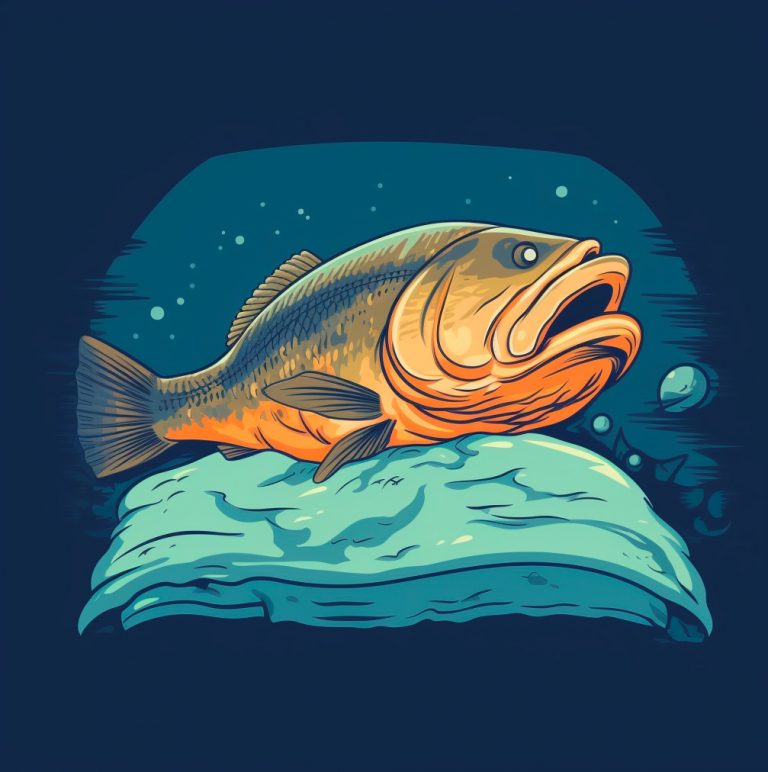
Megabass Dark Sleeper Swimbaits For Bass
Introduction As an avid bass fisherman, I’m constantly on the lookout for new gear and tools to improve my chances of catching bigger and better bass. Recently, I came across the Megabass Dark Sleeper Swimbaits, and my curiosity was piqued. What makes these swimbaits so special? Do they really live up to their reputation among […]
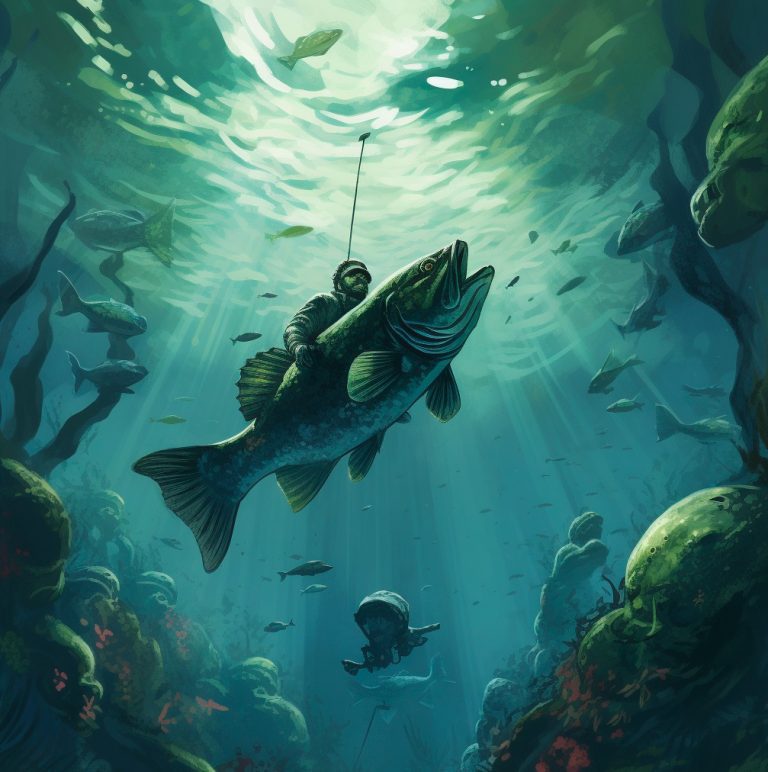
Swim Jigs For Bass: A Comprehensive Guide
Introduction As a bass angler, I’ve always been intrigued by swim jigs. They’re one of the most talked-about and effective lures in the sport, but there’s something about them that always left me perplexed. What is it about swim jigs that make them so effective? How do you choose the right one for each situation? […]
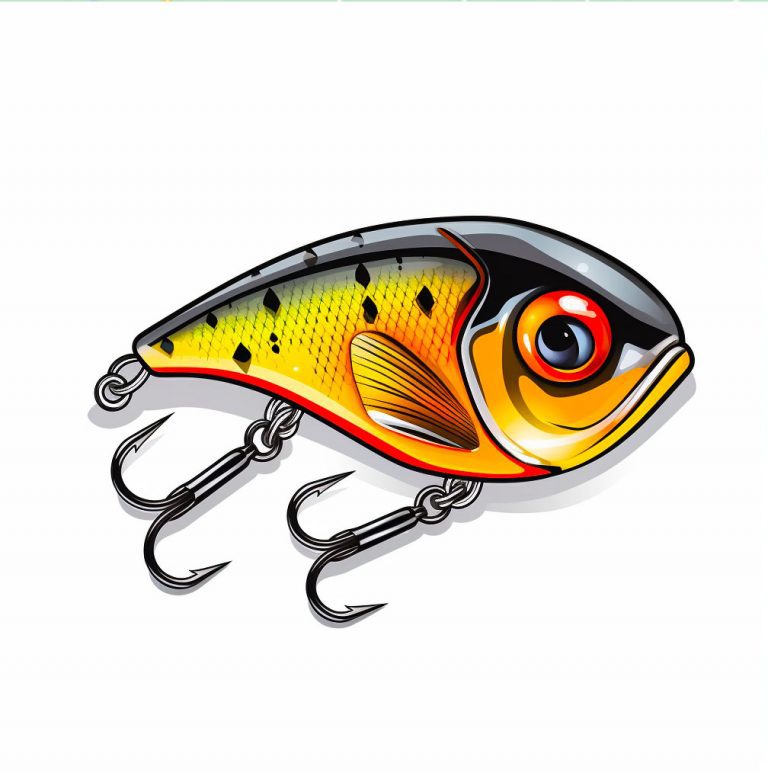
Guide To Catching Bass With Rapala DT Crankbaits
Introduction Bass fishing is one of my absolute favorite hobbies. There’s something about the thrill of the chase, the excitement of reeling in a big catch, that just can’t be matched. Over time, I’ve tried out a variety of different lures and techniques to reel in those big bass, but I have to say that […]
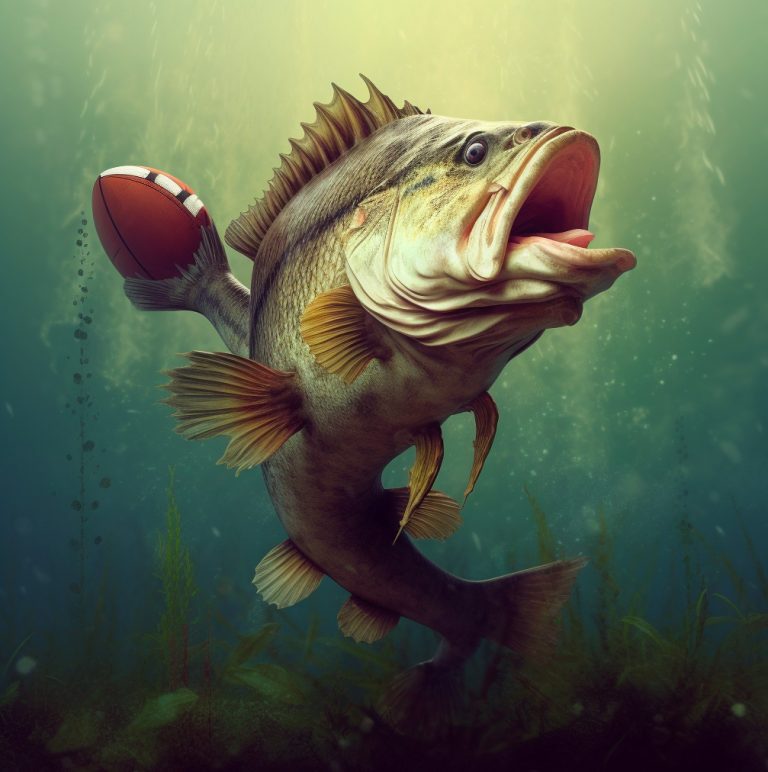
A Guide To Catching Bass On Football Jigs In Every Season
Introduction: Football jigs are a versatile and effective fishing lure that can be used to catch bass all year round. However, different seasons require different approaches when it comes to fishing, and the same is true for football jigs. As an avid angler, I have spent countless hours fishing for bass using football jigs, and […]
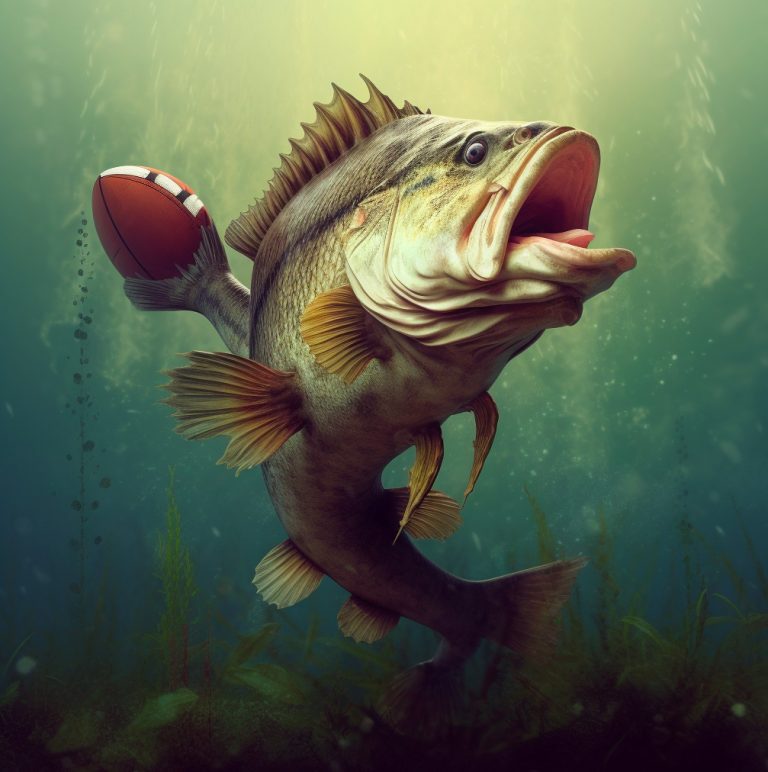
Best Rod, Reel and Line For Football Jigs
Introduction As I sit here on the shores of my favorite fishing spot, I can’t help but feel perplexed by the amount of gear that fishermen bring with them. Every angler seems to have their own unique setup, from rods to reels to lines. And while I appreciate the variety, it also begs the question […]
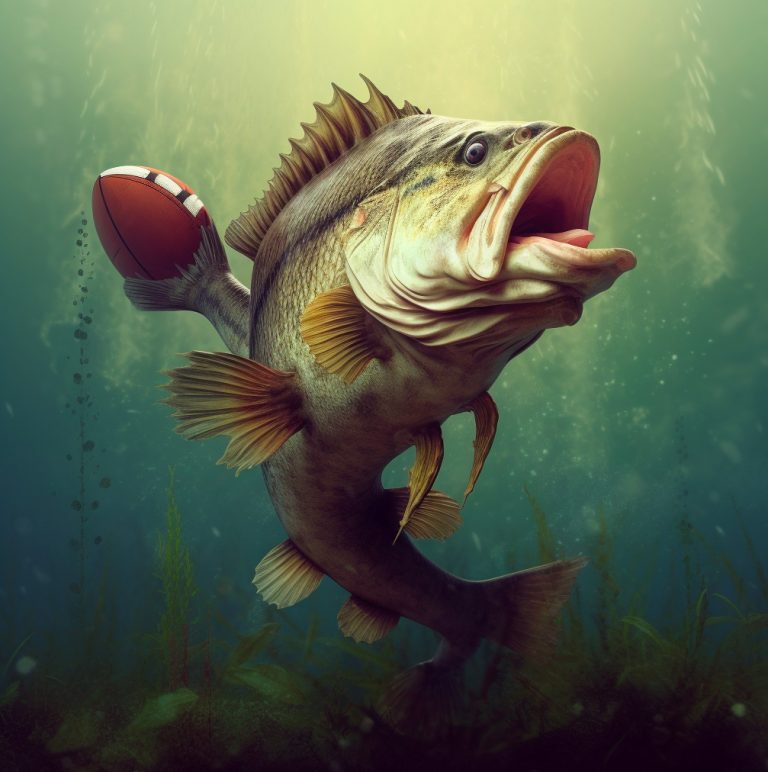
A Guide To Football Jigs For Bass
Introduction As a lifelong angler, I’ve tried my hand at countless types of fishing for different species. But when it comes to fishing for bass, there’s one technique that has stood out above the rest: using football jigs. At first, I was skeptical. The jigs didn’t look like they had much action in the water […]

